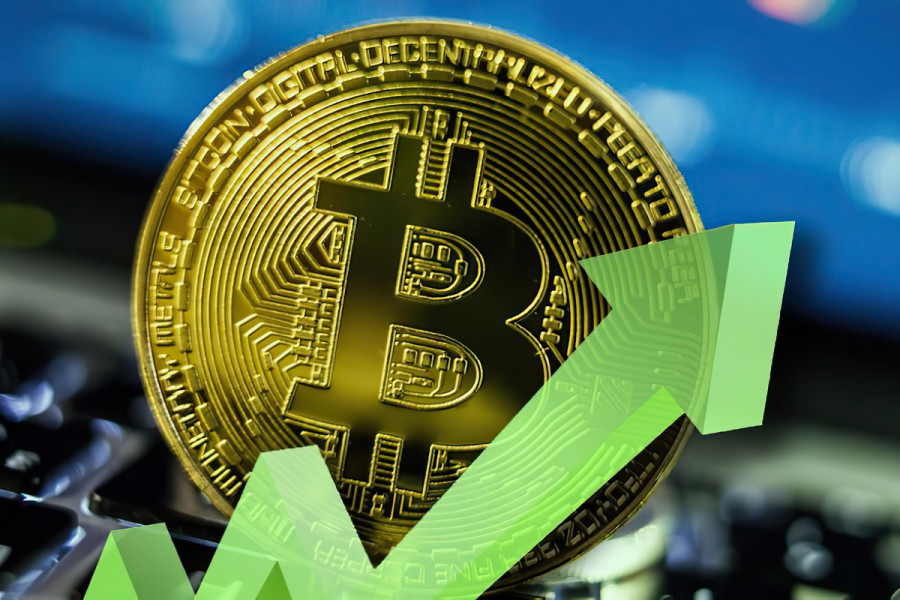The second month of summer is traditionally considered a favorable period for Bitcoin. It's quite possible that the pattern will repeat this year, and BTC may begin its ascent toward new highs.
According to analysts, Bitcoin typically "sleeps" through June before waking up in the next quarter and rewarding traders with bullish momentum. "June is historically a slow month for BTC," notes a market analyst at Daan Crypto Trades. This June was no exception: spot prices for Bitcoin remained in a narrow range and held steady.
On Tuesday, July 1st, Bitcoin opened the day moving sideways. Later, it traded at $107,200 before suddenly pulling back. As a result, Bitcoin fell to a low of $106,858 but maintained its composure.
According to Coinglass data, Bitcoin's average return in June over the past twelve years is virtually flat (-0.12%), while July has historically shown a strong average gain of +7.56%. The average return drops to a modest +1.75% in August. Selling pressure typically reemerges in September, bringing a historical average decline of -3.77%.

Against this backdrop, many crypto enthusiasts are hoping for a mid-summer rally. The seasonal factor plays an important role here, especially as it contrasts with a busy macroeconomic calendar and the traditionally illiquid vacation period. Will the 2025 seasonal pattern repeat? That depends on macroeconomic conditions, ETF inflows, and Bitcoin's ability to turn resistance into a new price peak.
At the end of June, the flagship asset rose 2.7% to $107,600, marking its third consecutive monthly gain following a two-month decline. From a seasonality standpoint, July has been relatively successful for BTC. Over the past 14 years, Bitcoin has ended July in the green nine times and declined five times. On average, BTC has gained 20.2% in July and lost 7.8% in declining years. In the bullish scenario, Bitcoin could finish July at an impressive $129,300, setting a new all-time high. In the bearish case, it may retreat to a more modest $99,200.
Bitcoin embraces core principles of store of value
According to Alexander Lutskevich, founder and CEO of CEX.IO, Bitcoin is increasingly aligning with the core principles of a store of value. The situation is improving for BTC in a way similar to assets that were once dismissed as overhyped or unproductive — like tech stocks during the early 2000s dot-com bubble. Two decades later, tech companies now make up nearly 50% of the S&P 500 index — a key benchmark for generational value.
Technology stocks and gold both endured periods of skepticism and misunderstanding. Yet both prevailed by proving their long-term structural significance. Bitcoin appears to be following a similar trajectory. It possesses several fundamental characteristics of a store of value: scarcity, mobility, and divisibility. However, certain attributes — like the ability to preserve value over time — require proof through time, not just design.
Another key factor in becoming a true store of value is resilience during crises. So far, Bitcoin has demonstrated strong durability in turbulent times, occasionally outperforming traditional assets. One standout example was its performance during market turmoil sparked by President Donald Trump's trade policies.
In the week following "Liberation Day," Bitcoin outperformed the S&P 500, Nasdaq 100, and both Asia-Pacific and European equity indices. It even briefly surpassed gold, posting a monthly gain of 13%. Many Wall Street currency strategists called the result "impressive," and Alexander Lutskevich believes the data points to a clear pattern rather than a coincidence.
Declining volatility and growing liquidity
A common criticism of Bitcoin as a store of value centers on its high volatility. However, volatility is not a constant; it tends to decline as market adoption and integration deepen. In 2024, analysts observed that Bitcoin was less volatile than 33 stocks in the S&P 500. Volatility has steadily decreased alongside Bitcoin's growing market capitalization. This trend continued in 2025, with new lower peaks in volatility recorded. As a result, Bitcoin now offers more stability than explosive growth, with its average annual volatility closer to that of gold and other major financial instruments.
Increasing institutional adoption and liquidity have been key drivers of this transformation. Over the past year, Bitcoin's 2% market depth on spot markets has increased by 60%. Most of this capital influx has come from US-based exchanges, which are increasingly focused on institutional clients.
However, despite significant corporate purchases of BTC in recent months, the impact on its price has been limited. According to experts, the breakout of the first cryptocurrency is being deliberately restrained by large players accumulating Bitcoin ahead of the next growth phase. Selling pressure from long-term holders has kept the price near the $100,000 level — though this may soon change.
Among market participants, Bitcoin is still widely viewed as a high-risk, volatile asset. Yet its consistent evolution into a legitimate store of value should not be ignored. A crucial fact: no other asset besides Bitcoin is currently in a position to claim — let alone earn — this status. And the first cryptocurrency isn't afraid of such ambitious goals, which now have a strong chance of materializing.

QUICK LINKS